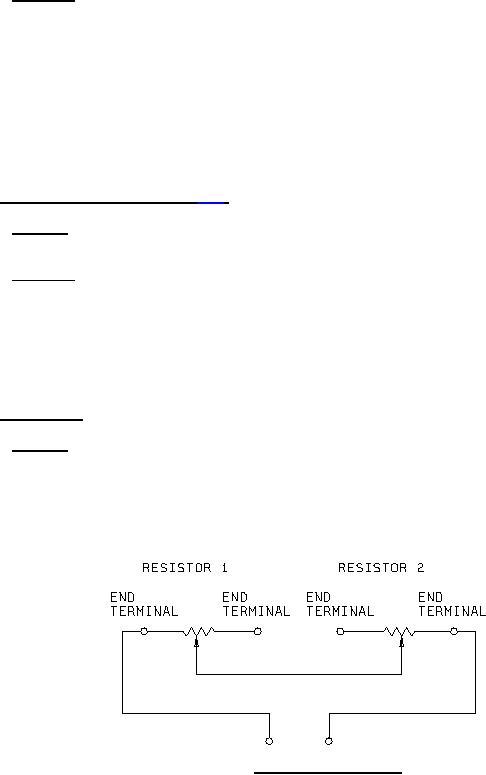
MIL-PRF-39002C
4.6.20.2 Procedure. Total resistance and setting stability shall be measured as specified in 4.6.2.1 and 4.6.11.1,
respectively. The resistors shall be placed in a chamber at room temperature. The temperature shall be gradually
O
O
O
decreased to -55 C +0 C, -5 C within a period of not less than one and one-half hours. For conformance inspection
only, and at the option of the supplier, the resistors may be placed in the chamber when the chamber is already at the
extreme low temperature. After one hour of stabilization at this temperature, setting stability shall be measured as
specified in 4.6.11.1. Full rated continuous working voltage (see 3.1 and 3.6) shall be applied for 45 minutes. The
resistors may be loaded individually or in parallel. Fifteen minutes +5 minutes, -0 minute after the removal of voltage,
setting stability and torque shall be measured as specified in 4.6.11.1 and 4.6.10, respectively. The temperature in
the chamber shall be gradually increased to room temperature within a period of not more than eight hours. The
O
O
resistors shall be removed from the chamber, and maintained at a temperature of 25 C ±5 C for a period of
approximately 24 hours. Total resistance shall again be measured as specified in 4.6.2.1. Resistors shall be
examined for evidence of mechanical damage.
4.6.21 High temperature exposure (see 3.26).
4.6.21.1 Mounting. Resistors shall be mounted in such a manner as to allow electrical connections to be made to
the terminals.
4.6.21.2 Procedure. Total resistance and setting stability shall be measured as specified in 4.6.2.1 and 4.6.11.1,
O
O
O
respectively. The resistors shall then be exposed to an ambient temperature of 135 C +5 C, -0 C for a period of
250 hours ±8 hours. Not less than two hours after the end of the exposure period, setting stability and total
resistance shall be measured as specified in 4.6.11.1 and 4.6.2.1, respectively; torque shall be measured as
specified in 4.6.10, except that it shall be determined during the movement of the contact arm from the position for
setting stability to the position for total resistance; dielectric withstanding voltage (at atmospheric pressure),
independent linearity tolerance and insulation resistance shall be measured as specified in 4.6.7.1, 4.6.8, and 4.6.9,
respectively,. Resistors shall then be examined for evidence of mechanical damage.
4.6.22 Rotational life (see 3.27).
4.6.22.1 Mounting. Resistors shall be mounted as specified in 4.6.19a. Care should be taken to insure that side
thrust is minimized by the proper alignment of the resistor shafts with the drive shafts. The resistors shall be ganged
in pairs and each pair shall be connected in series as shown on figure 4, so that a nominally constant current flows
through the resistor, irrespective of the contact arm position during the cycling of the shafts. The shafts shall be so
connected mechanically that they will turn simultaneously in the same direction. When performing this test on
locking-bushing types, the locking nut shall be removed.
FIGURE 4. Rotational life test circuit.
20
For Parts Inquires call Parts Hangar, Inc (727) 493-0744
© Copyright 2015 Integrated Publishing, Inc.
A Service Disabled Veteran Owned Small Business